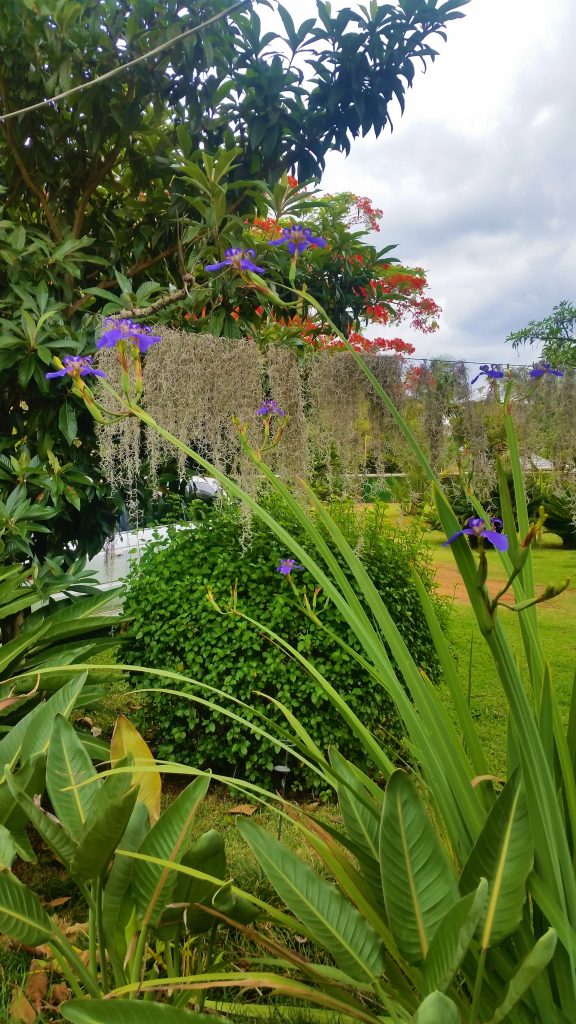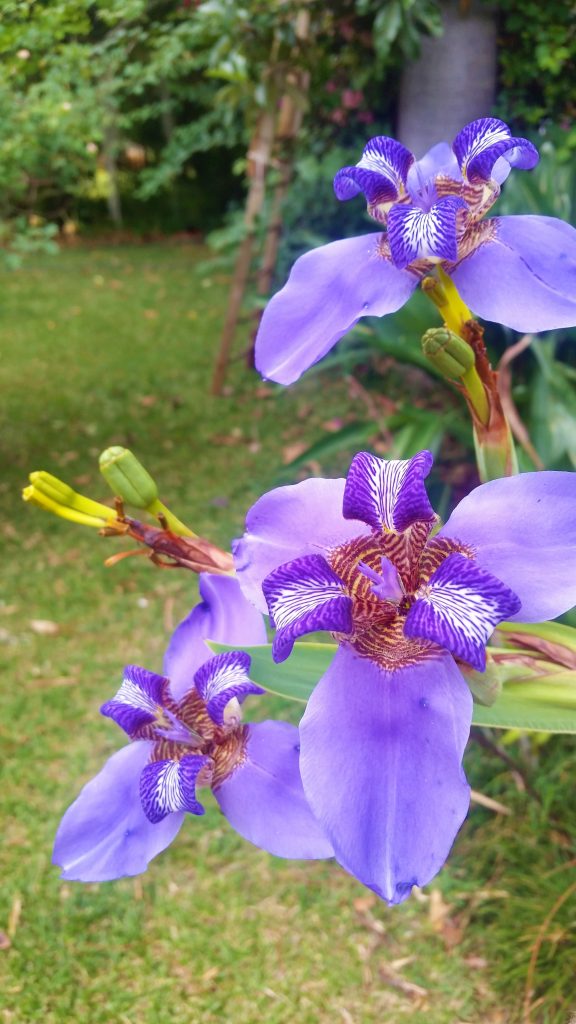by Morag Flight
The Louisiana Iris is native to the southeastern United States. Aptly named for its region of origin, this species grows in the swamps, along riversides, and damp hillsides. Garden cultivation and hybridizing of the Louisiana Iris has brought us a vast array of colors and flower forms.

Louisiana Iris grow well in much of the world, proving highly adaptable as to climates, soils, and cultural practices. They will tolerate a wide range of moisture conditions and can survive a periodic drying out, but will not prosper nor bloom well if grown with less than an inch of water per week during the growing season.
When you receive your rhizomes, soak them in water overnight before planting. Keep the tops of the rhizomes one inch below soil level. Plant with a general fertilizer. Keep rhizomes moist. They can be planted throughout the year here assuming you provide adequate water and protection from the hot sun.
Like most Iris, Louisianas need sunlight in order to prosper. They bloom best
with six to eight hours of sunlight per day.
Louisiana Iris tolerate a wide range of soil types and acidity levels.
The old belief that these irises preferred a highly acidic soil has been
disproved. The best advice is to avoid both pH extremes. They can tolerate heavy clay soils or soils
rich in organic matter as long as it is moist.
Transplanting immediately after blooming is not recommended. If existing
beds are to be divided and replanted, dig out all the Iris and rework the beds,
adding organic materials and a commercial fertilizer. Replant as soon as
possible, preferably the same day. Do not allow the newly planted beds to dry
out; water every few days until the plants are established. Planted in a
triangular format (about 12 inches apart), they can be left 3 to 4 years and
will form nice clumps.
These Iris respond well to deep watering rather than a mere “sprinkling.” They produce best if given lots of water. They will even grow and bloom in standing water. They are ideal for growing in pots sunken into fishponds. Remember as you grow them in water they will need more frequent feeding. They also respond well to mulching. Leaf mold makes great mulch.

